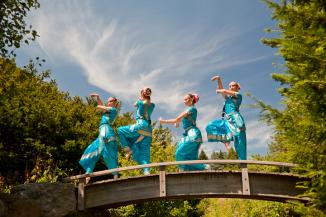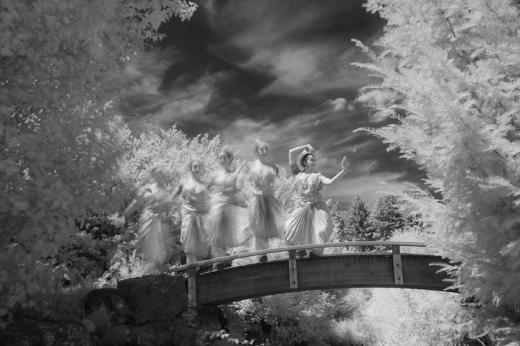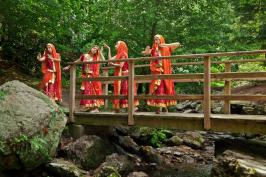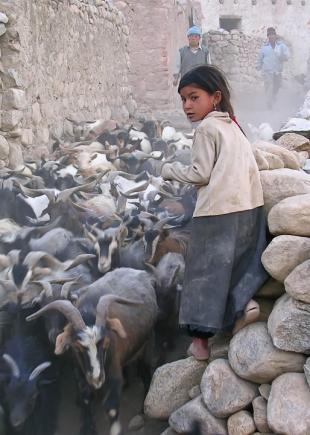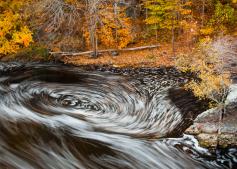Contribute
| In Conversation With Don Perrault |
Ranjani Saigal
03/29/2011
Don Perrault has been actively pursuing his passions as a photographer since 1980. He has been an optical engineer for over 20 years, and is currently working at a biotech company in Boston. He has spent a total two of the past twenty years traveling to remote regions in the Himalayas and Asia, to countries like Tibet, Nepal, Mongolia, India, Pakistan, Vietnam, and China. His photographs are continually displayed at cafes around Boston MA. He collaborates with non–profit initiatives such as the Tibetan Village Project (www.tibetanvillageproject.org
Brookline, MA 02445
How did you get so interested in photography?
Photography has always been a way for me to focus my mind in present by exploring the world around me . It was only after I was older that I realized the meditative effects photography had on me when I was younger. I had a passion for photography ever since I can remember. I started with a Kodak instamatic, that my grandmother gave me, and was fueled by images from National Geographic Magazine. However, I did not seriously get into photography until I was able to buy my first 35mm SLR at the age of 14. Shortly after I dropped out of Boy Scouts, and joined the Plymouth Photo Club to learn as much as I could about photography. However in college, I decided to pursue my other interests in electronics, wave theory, and music at Northeastern University, where I received a BS in Electrical Engineering in 1989. After college, I went into a career of biomedical optics, which enabled me to travel to remote regions in Asia for one month a year on vacation. During this 15 year period I was able to explore the diversity of cultures and landscapes in regions such as Ladakh India, Tibet, Nepal, Pakistan, Mongolia, Vietnam, China, and East Africa.
How did you get the idea to use photography to support social causes?
I used to travel to remote regions in Asia for vacation. I also spent 9 months hiking and cycling throughout the Himalayas. In India, I cycled from Simla to Ladakh via Kinnaur, Spiti and Lahaul. I also cycled through Tibet as well. Traveling by bike really gave me a great opportunity to meet the local people and see the landscape, and to really ask questions about what their lives were like. Some of the most beautiful regions and cultures in the world are also the poorest. However the spirit of those cultures often transcends the poverty. The idea to use photography as a way to support social causes, came naturally to me as a way to complete the experience by giving back to the cultures that I have learned to much from. The people and the landscape that I photograph deserved to be shared, not kept in a box on a shelf or a hard drive. Also, it would have been difficult emotionally for me to do anything else with the photographs.
I got my first start when my friend Jagdish Dhingra, MD asked me to help support the Medical Missions for Children (Woburn, MA). Dr Dhingra travels to Rwanda every year to provide free medical and surgical care for the local people. I had been to the Ugandan boarder of Rwanda in 1991. I saw this as a perfect opportunity to use my photographs from Uganda to support his cause. I donated 5 photographs, which he was then able to sell at a private auction to raise money for his trip. After this success, I began to look for other ways to use my images to support social causes.
Why do you think photography is an effective medium to bring awareness to social causes?
Photograpahs are direct portals of visual communication from the subject to the photographer and viewer. They create an awareness and memories that can often be long lasting. They can help people visualize the life of causes they support. They can challenge the viewer to ask questions about what they see. Just think back to the intense beauty in the eyes of the Afghan woman on the cover of National Geographic in 1985. Images such as these are what drew my attention the remote regions in Asia, where I saw how challenging life was for the people.
How do you pick the social causes that you chose to support?
The social causes are usually connected to the regions where the photos where taken. Sometime the connection is somewhat creative. In addition to Medical Mission for Children , I am sponsoring the tuition of an Afghan girl in Kabul through my freelance photography. My photographs of Tibet have been on display at various JP Licks locations for the past nine months. The proceeds go towards the earthquake victims in Tibet through the Tibetan Village Project.
What effect has your support made to the cause? Has it brought them funds? Increased media coverage?
The contributions the photographs have towards a cause can be financially significant. Since my causes are often based in developing countries, the leverage of the US Dollar to the local currency can be significant. One of my biggest successes has be the work I have done with Containers to Clinics ( Dover, MA). This is an organization founded by my friend and travel mentor, Elizabeth Sheehan. They convert used shipping containers into portable medical clinics designed to be used in rural areas around the globe. She was having a fundraiser to launch her first clinic to support the earthquake victims in Haiti. I donated about 10 photos to her cause, which were then used as part of a private fundraising auction. The money that was raised covered roughly half the cost to build the first medical clinic.
My latest cause has been the Rural India Dance Program that I set up with Aparna Sindoor at the Navarasa Dance School ( Somverville, MA). The program sponsors the salary of two dance instructors (one classical, one folk) to travel to a rural village outside of Trivandrum in Kerala India. The teachers provide free dance lessons to the girls in the village on weekends. The funding for the program has been raised through various aspects of my photography. I hope to start photographing arantgetrams, where a large percentage of the cost of my services can paid directly as a tax deductible donation to Navarasa Dance Theater to support the school.
You have some wonderful photographs of Indian classical dance. How did you get interested in that subject?
My first exposure to classical Indian dance was at the Peabody Essex Museum in the early 90s, when I accidentally walked into a room at the end of classical Indian dance performance. I was captivated by the beautiful, fluid dance sequences. I soon became a regular at performances by Aparna Sindhoor and the Narvasa Dance Theater. I also regularly attended classical music performances at MITHAS. I even studied the sitar for a while with Vijaya Sundram in Arlington.
However, the idea to combine photography, classical Indian dance and Indian music only came to me recently. I was recovering from a very long illness that had affected my hearing, and forced me to give up music for several years. As my symptoms improved, one morning I started to listen to the sitar composition "Naked" by Anoushka Shankar, and "Easy", performed with her sister Norah Jones. I then went out into the rain along the Charles River, and started to notice that the cyclical vortices in the river resembled the cyclical melodic and rhythmic patterns in the music. So I started doing so long time exposures to capture the motion of vortices. Some of the images resembled the rings of Saturn, and matched the cosmic feel of the song "Naked". At this point it dawned on me that I should try to do visual interpretation of Indian ragas. I just don't know why to took me over a decade to figure it out. This was how the Visual Raga Project was conceived. I then realized that classical dance could be another way that I could explore the visual aspects of a raga similar to a ragamala. However, I wanted explore the connection between the expression of nature in the raga and the dancer. So I started photographing the dancers in beautiful natural settings such as the Arnold Arboretum. I often superimpose multiple images, and blur the motion of many of the images to capture the natural flow of the dance sequence. I really encourage the dancer to perform spontaneously based on her feelings of the surrounding environment. I have been really lucky to work with Shivani Seth a Rajastani Ghoomar dancer, and Tejassi Thatte and Rachel Ferrulo, two of Neena Gulati's students. I am looking forward to working with Aparna Sindhoor, Tara Ahmed and anyone else who is interested.
Any special message you would like to share with our viewers?
If someone has a cause they are interested in supporting, they should try to be creative in what they have to offer the cause. Some people can offer money, but artistic, business or technology expertise can be really useful. Then try to network with people who share the same interest in the cause, or with people who have complementary skill sets, who could be recruited to support the cause.
You may also access this article through our web-site http://www.lokvani.com/
